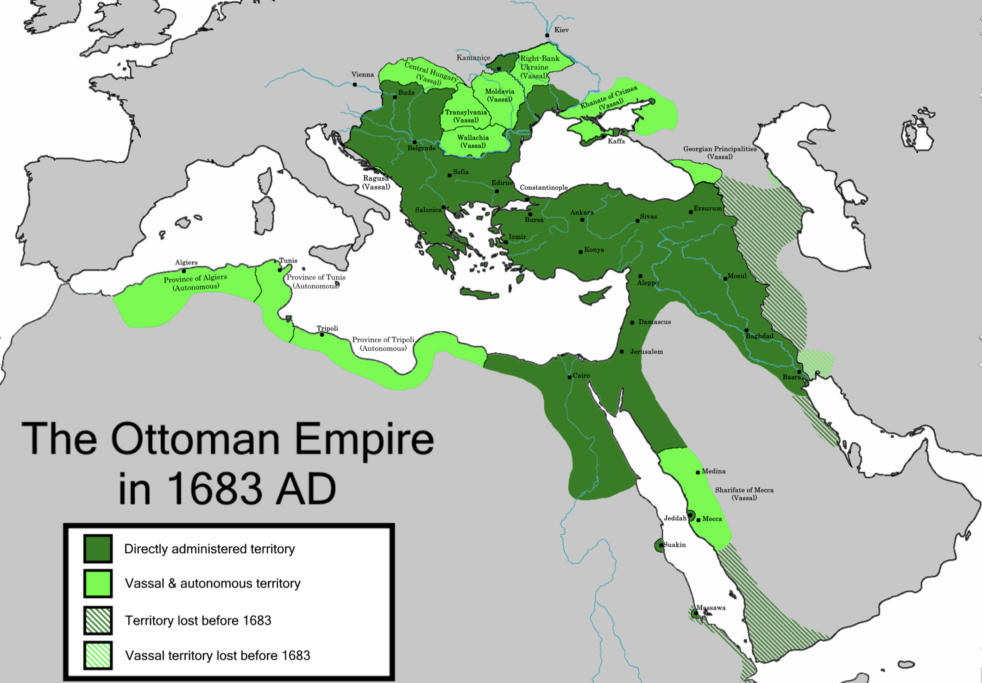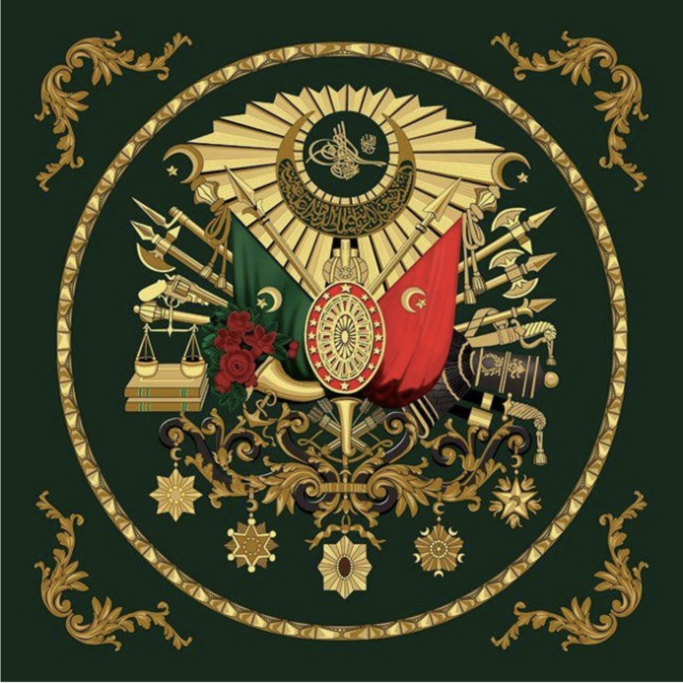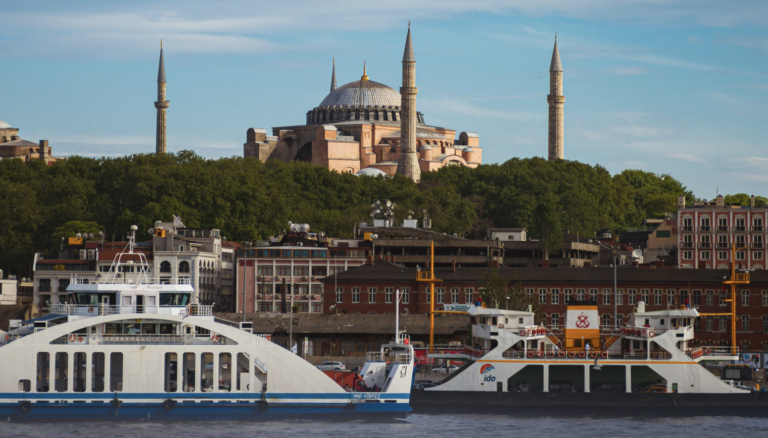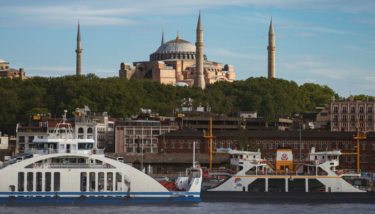はじめに
ロシアはクリミア半島の併合にとどまらず、2022年2月21日に停戦協定を破棄し、24日にはウクライナに侵攻した。西側諸国は一斉にこの事態に経済制裁などへの同調している。でも、ロシアがなぜ侵攻に踏み切ったかを解説するメディアは少数だ。構図はNATOの拡大とこれを阻止したいロシアの戦いだ。どちらにもきっと正義があるのだろう。このような軍事による領土拡大はこれまでも数知れず繰り返されている。TED-Edでそんな動画を探したらオスマン帝国の台頭の理由という動画があったので視聴してみた。
(出典:YouTube)
オスマン帝国の台頭の理由
オスマン帝国とは、1299年に始祖オスマン一成がアナトリアに建国し、1922年にメフメト6世が廃位するまでの623年間続いた多民族帝国である。現在のイスタンブールを首都として、最大勢力を誇った1683年には欧州、北アフリカ、中東まで拡大した。これほどに急速の拡大し、かつ長期間の間勢力を維持した理由はなんなのだろう。

(出典:オスマン帝国)
宗教の自由の保障
オスマン帝国は宗教の自由が許されていた。ただし、単に自由なのではなく、非ムスリムはジズィー(Jizye)と呼ばれる人頭税を払う。裁判での証言能力が制限されたり、政治参加が制限された。軍役を免れる一方で、軍で活躍して昇進する機会も与えられなかった。この背景には、ムスリムは、クルアーンやハディースの規定に則って、キリスト教徒やユダヤ教徒を同じ一神教を奉じる「啓典の民」として認めたためだ。キリスト教徒から見るとビザンツ帝国よりもムスリムの支配を歓迎したという側面がある。つまり、正教徒、アルメニア教徒、ユダヤ教徒などの非ムスリムとオスマン帝国の利害が見事に一致したのかも知れない。ちなみに、ムスリム男性と啓典の民の女性との結婚は認められていたが、その逆に例えばキリスト教の男性とイスラム教徒の女性の結婚は禁じられていた。これは、家族に対する責任は父親に帰属するという概念に基づくものとされていた。

(出典:オスマン帝国の歴史)
若者の活用と人材抜擢
オスマン帝国の躍進の秘密の一つは、キリスト教との若者の活用と抜擢だ。つまり、オスマン帝国が進出したバルカン半島のキリスト教徒の少年を捕らえ、イスラム教に改修させ、軍事エリートの集団としての部隊ジャニサリー(Janissaries)に配属して、活躍して功績を上げたものを政府の宰相(vizier)に抜擢した。これは後続のジャニサリーの隊員の士気を大いに高めただろう。人の使い方が非常にうまい。まるで戦国武将として活躍した織田信長(1534年6月23日から1582年6月21日)のようだ。
8つの質問
Q1) Under Ottoman Islamic rule non-Mulsims identifying as members of —— religious communities were allowed religious
最初の質問は、オスマン帝国ではキリスト教とユダヤ教に限定されるけど宗教の自由が認めらていたので、「freedoms」が正解のようだ。
Q2) Ottoman rulers were often distinguished for their political acumen, often prioritizing —– when making strategic decisions.
オスマン帝国では、政治的な支配や軍事的な有効性を優先して戦略的な決断がなされたので、「Political and Military utility」が正確のようだ。
Q3) The Janissaries were an Elite military fighting force made up of
ジャニサリとはオスマン帝国で採用されたエリート戦闘部隊であり、多くはキリスト教の少年をイスラム教徒に改宗させて兵隊として訓練し、活躍したものを抜擢したので、「Muslim men who originated from Christian families」が正解のようだ。
Q4) The name of the Ottoman capital, Istanbul, comes from
イスタンブールには一度旅行に行きたい。ギリシャ語で「to the city」という意味だった。
Q5) At its peak territorial expansion, the Ottoman Empire covered
オスマンのピーク時には東南アジアから西部アジア、北オフ理科、さらに赤海周辺まで広がったのは先に説明した通りだ。
Q6) As one of many Turkic beyliks in Anatolia at the beginning of the 14th century, what factors helped the Ottomans succeed in expanding their territorial control and influence in Anatolia and the Balkans when others failed?
これはQ1やQ2、Q3とも関係するけど、領土を拡大できた理由は、周辺諸国との戦略的な政治同盟や軍事衝突に加え、民族や宗教の違いよりも軍事を優先させたことだ。また、勝利の評判がより多くの傭兵を可能にし、勝利の好循環を達成したので、英語で言えば次のような感じだろうか。
Q7) During the expansion period, namely between the 14th and 16th centuries, the Ottomans followed a policy of tolerance of religious differences in their conquered territories? How did Ottoman religious tolerance help or hinder Ottoman expansion?
これも繰り返しになるけど、オスマン帝国が発展した原因の一つは宗教的寛容さだろう。オスマン帝国はキリスト教徒やユダヤ教徒に信教の自由を保障する見返りとして、ジズィーと呼ばれる税金を徴収した。オスマン帝国はユダヤ人からの税収で軍備を拡大することができた。英語例は次のような感じだろうか。
Q8) What did the early sultans employ in their governing system that was inherited from former Islamic empires and how did that color their rule through the end of the 17th century?
この質問はイスラム帝国から引き継いでその後の統治に役立てたものとなるとやはり宗教の自由や多様性の許容だろうか。イスラム帝国は領土を拡大し、経済成長、芸術、建築の黄金期を迎えた時期には、オスマン帝国は世界中から職人を集め、文化的革新を促した。スルタンに命じられて建てた華麗なモスクや建築物も復活した。英語では次のような感じかなあ。
まとめ
トルコは親日国だ。日本語とトルコも同じアルタイ・グループに属していて近しい言語だ。なぜ近しいのかは謎だけど、興味深い。コロナ禍が収まり、平和な世の中になれば、現地を旅してみたいと思う。
以上
最後まで読んでいただきありがとうございました。
拝
参考:英文スクリプト
Let’s Begin…In the late 13th century, Osman I established a small principality sandwiched between a crumbling(崩壊) Byzantine Empire and a weakened Sultanate of the Seljuk of Rum, in what is now Turkey. This territory had outmaneuvered more powerful neighbors to become the vast Ottoman Empire in just a few generations. What enabled its rapid rise? Mostafa Minawi details the early days of the Ottomans.
In the late 13th century, Osman I established a small beylik(公国), or principality, in what is now Turkey. In just a few generations, this veylik outmaneuvered more powerful neighbors to become the vast Ottoman empire.
What enabled its rapid rise? In Osman’s time, the Anatolian peninsula was a patchwork of Turkic principalities sandwiched between a crumbling Byzantine Empire and the weakened Sultanate of the Seljuk of Rum. Osman Quickly expanded this territory through a mixture of strategic political alliances and military conflicts with these neighbors, attracting mercenaries(傭兵たち) first with the promise of booty(戦利品), then later through his reputation for winning.
Osman was the first in a line of Ottoman rulers distinguished by their political shrewdness. Often prioritizing and military utility over ethnic or religious affinity, they expanded their influence by fighting along certain sides when needed, and fighting against them when the time was right. After Osman’s death, his son Orhan established a sophisticated military organization and tax collection system geared towards funding quick territorial expansion.
The ottomans’ first major expansion was in the Balkans, in southeast Europe. The military employed a mixture of Turkic warriors and Byzantine and other Balkan Christian converts. They captured thousands of young Christian boys from villages from across the Balkans, converted them to Islam, and trained them to become the backbone of a fierce military elite force known as the Janissaries. The captured enslaved boys could rise to the high position of a vizier(宰相) in the Ottoman government.
Rulers of conquered areas were also allowed, even encouraged, to convert to Islam and take positions in the Ottoman government. Meanwhile, non-Muslims who belonged to Abrahamic religions were allowed religious freedom in exchange for a tax known as Jizye. Among other strict conditions – for example, they were not allowed to join the army. By the end of the 14th century, the Ottomans had conquered or subordinated most of the Anatolian beyliks as well as the Balkans.
But in the first half of the 15th century, as Sultan Beyazit I focused on Western expansion, the Central Asian ruler Timur attacked from the east. He captured Beyazit and carted him off in an iron cage, sparking a ten-year struggle for succession that almost destroyed the Ottoman empire.
Sultan Murad II turned this trend around but fell short of one of his loftiest goals: capturing the Byzantine capital, Constantinople. His son, Sultan Mehmed II, or Mehmed the Conqueror, vowed to succeed where his father had failed. In preparation for the attack on Constantinople, he hired a Hungarian engineer to forge the largest cannon in the world, used Servian miners to dig tunnels under the walls of the city, and ordered his fleet of ships to be carried overland, attacking the city from an unexpected direction.
He laid siege to the city and in the spring of 1453, Constantinople fell to the Ottomans. It would become the Ottoman capital, known by its common Greek name, Istanbul, meaning “to the city”. By the time Mehmed II conquered Constantinople, the city was a shadow of its former glory. Under the Ottoman rule, it flourished once again. On an average day in Istanbul, you could hear people speaking Greek, Turkish, Armenian, Persian, Arabic, Bulgarian, Albanian, and Servian. Architects like the famous Sinan filled the city with splendid mosques and other buildings commissioned by the sultans. Through Istanbul, the Ottomans brought commodities like coffee to Europe.
They entered a golden age of economic growth, territorial acquisition, art, and architecture. They brought together craftspeople from across Europe, Africa, the Middle East, and Central Asia to create a unique blend of cultural innovation. Iznik ceramics, for example, were made using techniques from China’s Ming dynasty, reimagined with Ottoman motifs. The Ottomans would continue to expand, cementing their political influence and lucrative trade routes. The empire lasted for more than 600 years and, at its peak, stretched from Hungary to the Persian Gulf, from the Horn of Arica to the Crimean Peninsula.




